August can be a great time to give your perennial flowers some attention. Most gardeners tend to think about pruning mainly in the spring, but trimming certain perennials in late summer can offer unexpected advantages. Such a practice can rejuvenate the plants and stimulate new growth.
Trimming perennials in August can encourage a second bloom before winter settles in. By deadheading spent blossoms and trimming back leggy stems, you can prompt your plants to produce new flowers. This technique works well for many popular garden favorites, resulting in a late flush of flowers that can extend your garden’s beauty into fall.
1) Coreopsis
Coreopsis, also known as tickseed, is a bright and cheerful perennial. It blooms from early summer to early fall, adding vibrant color to gardens.


In August, gardeners can cut back coreopsis to encourage a fresh burst of flowers. This practice helps extend the blooming season and keeps the plant looking tidy.
Trimming coreopsis in August encourages a fresh burst of flowers. Removing spent flowers and cutting back leggy stems can stimulate your plants to produce new buds. This simple gardening technique is effective for numerous popular garden plants, bringing about an additional burst of color that can beautify your garden well into the fall.
Coreopsis is easy to care for and thrives in various soil types. It prefers full sun and well-draining soil. Once established, it requires minimal watering and maintenance.
The plant attracts bees and butterflies, making it an excellent choice for pollinator gardens. Its drought tolerance also makes it suitable for xeriscaping.
Regular deadheading of spent blooms helps promote continuous flowering throughout the season. With proper care, coreopsis will provide a colorful display well into the fall months.
2) Salvia
Salvia is a popular perennial known for its vibrant flowers and aromatic foliage. In August, it’s time to give these plants some attention.
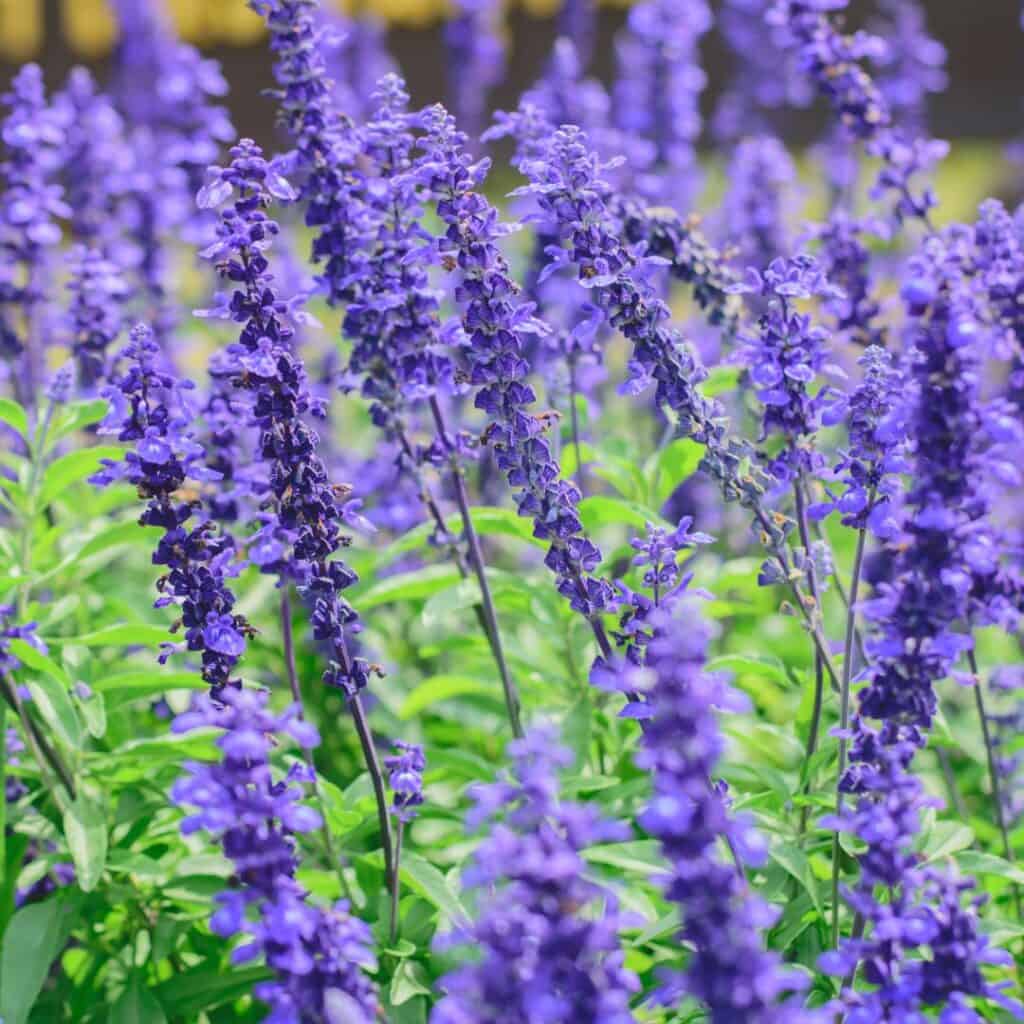

Cutting back salvias can encourage a late flush of flowers. Gardeners should trim off spent blooms and cut stems back by about one-third.
This pruning helps the plant focus energy on new growth and flower production. It also keeps salvias looking tidy and prevents them from becoming leggy.
When pruning, make sure to use clean, sharp tools to avoid damaging the plant. Anvil pruning shears work well for thicker stems.
After pruning, salvias benefit from a dose of balanced fertilizer and regular watering. This extra care helps them recover quickly and produce new flowers.
With proper care, salvias can continue blooming well into the fall, adding color to the garden for weeks to come.
3) Garden Phlox
Garden phlox is a popular perennial that blooms in mid to late summer. It produces clusters of fragrant flowers in various colors, including pink, purple, and white.
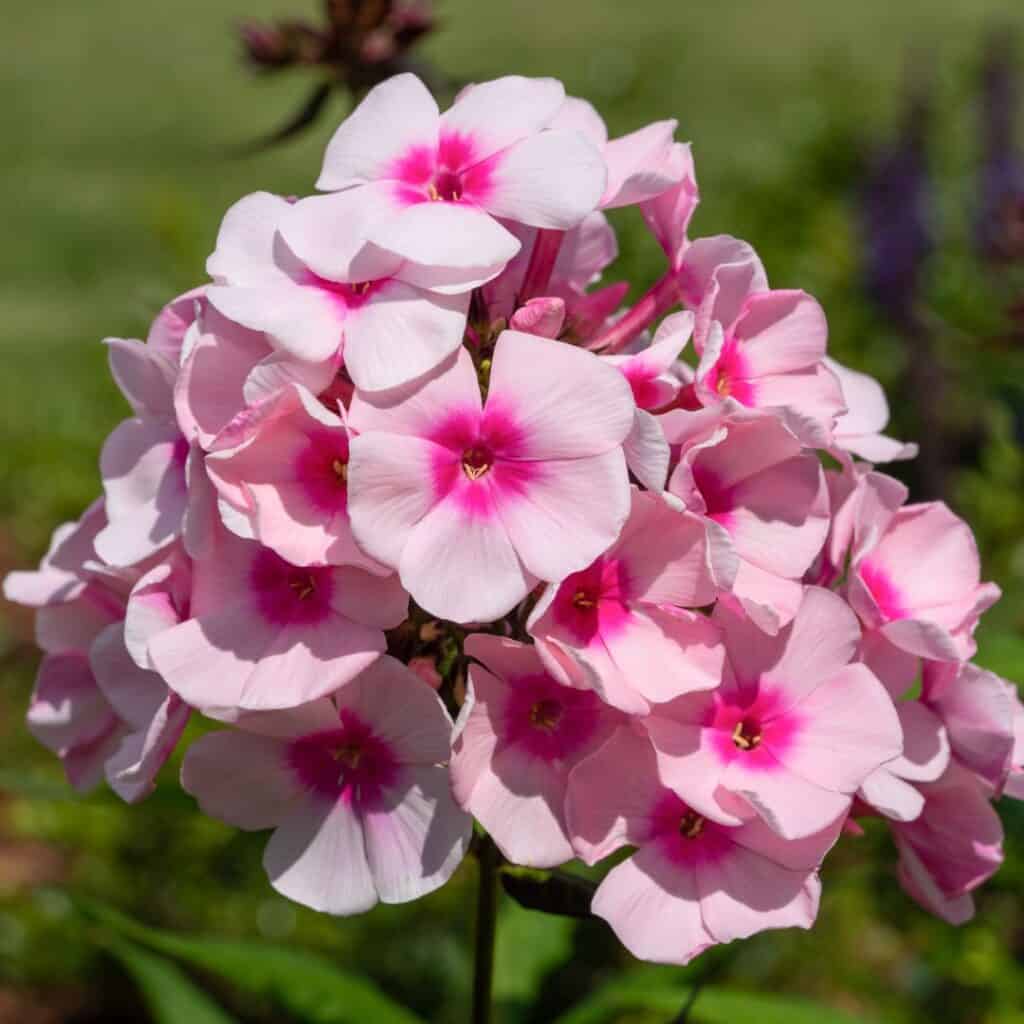

Cutting back garden phlox in August can promote a second flush of blooms. This practice also helps prevent powdery mildew, a common issue for these plants.
To trim garden phlox, cut the stems back by about one-third. Make sure to remove any diseased or dead foliage to improve air circulation.
After pruning, water the plants well and apply a balanced fertilizer. This will encourage new growth and additional flowers.
Garden phlox prefers full sun and well-draining soil. Regular deadheading throughout the season can extend the blooming period and keep the plant looking tidy.
4) Bee Balm
Bee balm (Monarda) is a popular perennial known for its vibrant, tubular flowers that attract pollinators like bees, butterflies, and hummingbirds.
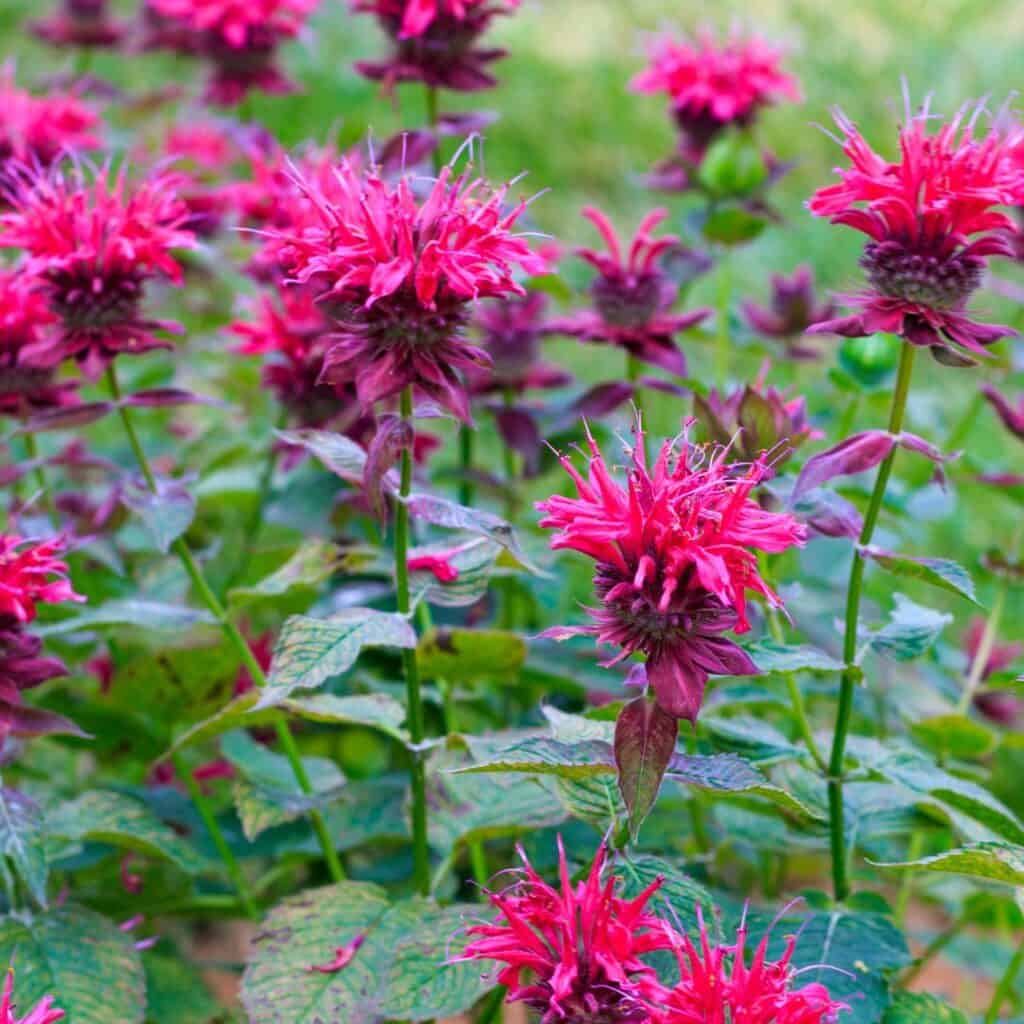

Cutting back bee balm in August can encourage a late flush of blooms, extending its colorful display into the fall. To do this, use clean, sharp pruning shears to trim back the spent flower stalks and any leggy or overgrown stems.
Aim to cut the plant back by about one-third of its height. This tidies up the plant and stimulates new growth and flower production. After cutting back, ensure the plant receives adequate water and consider applying a balanced, slow-release fertilizer to support the new growth.
Additionally, removing any diseased or damaged foliage can help improve air circulation, reducing the risk of mildew, a common issue with bee balm. With proper care, your bee balm can reward you with a fresh wave of vibrant flowers well into the cooler months.
5) Cranesbill Geranium
Cranesbill geranium is a hardy perennial that blooms from spring to fall. It’s known for its colorful flowers and attractive foliage.
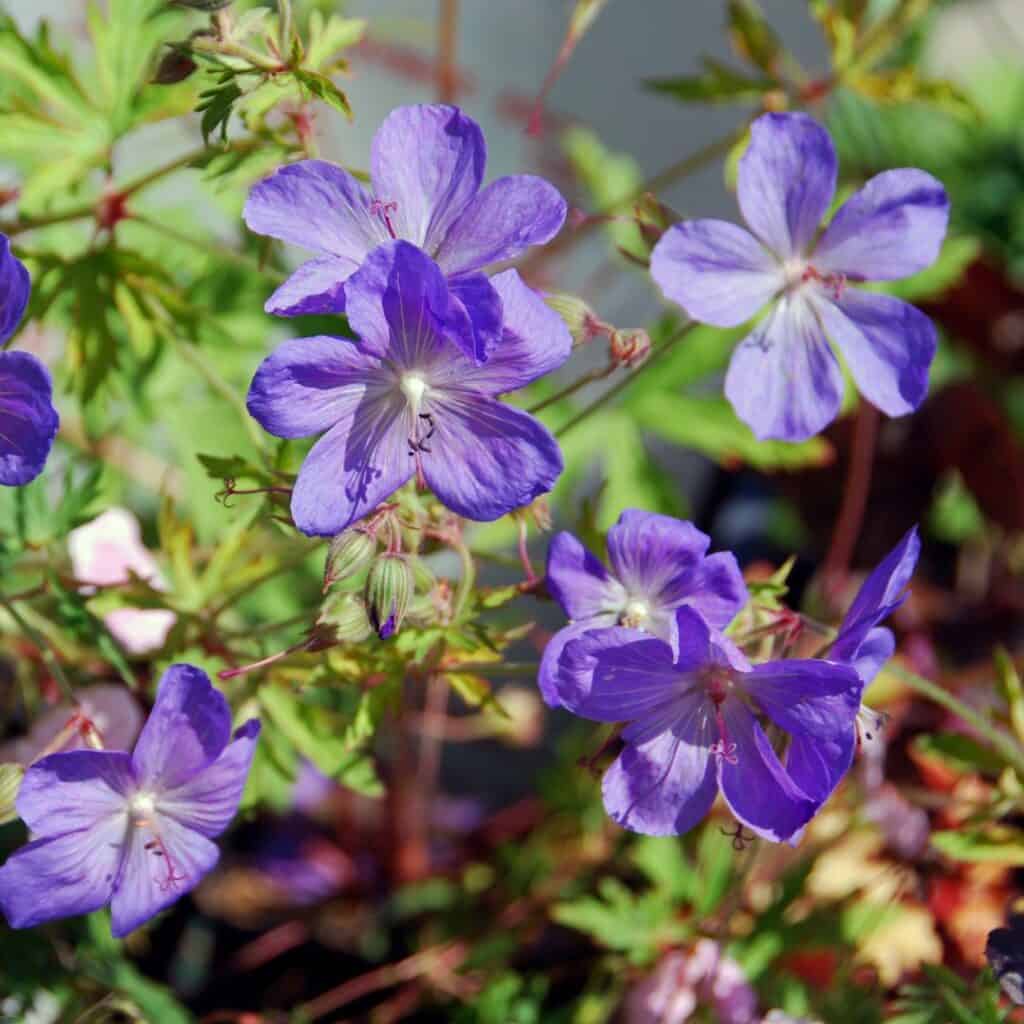

To encourage a second flush of blooms, cut back the cranesbill geranium in August. Trim the stems near the ground where no new buds are forming. This pruning helps rejuvenate the plant.
After cutting back, the cranesbill geranium will produce new growth and flower buds. The plant will reward gardeners with fresh blooms that last until frost.
Cranesbill geranium is adaptable to various conditions. It thrives in full sun or partial shade. Regular watering helps maintain its vigor, especially in sunny spots.
This perennial is easy to grow and care for. Its long blooming period and low maintenance needs make it a popular garden choice.
6) Lady’s Mantle
Lady’s Mantle is a charming perennial known for its soft, scalloped leaves. It grows well in regions with cool summers and thrives in USDA hardiness zones 3-7.
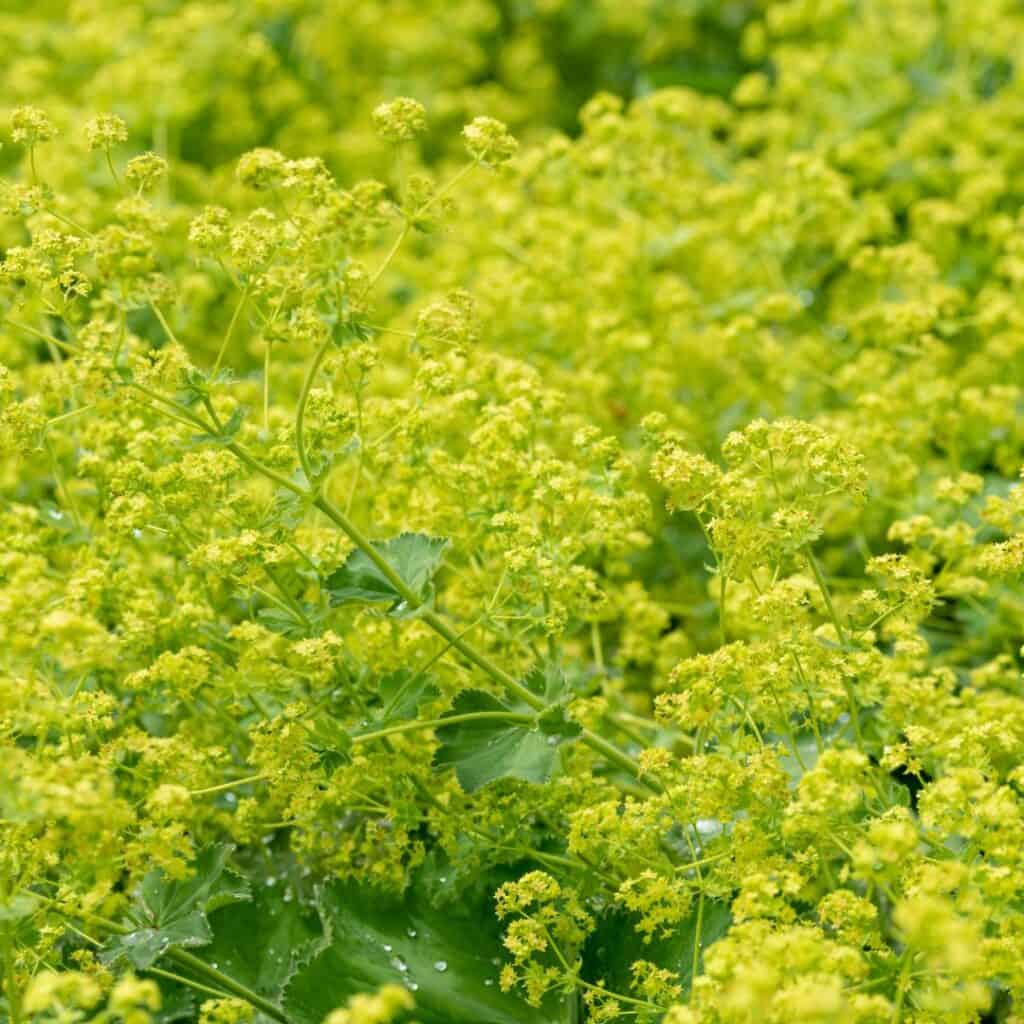

This plant benefits from cutting back in August. Trimming encourages new growth and can lead to a second bloom in some cases.
To cut back Lady’s Mantle, remove the entire plant near ground level. This rejuvenates the plant and promotes fresh foliage.
After cutting, Lady’s Mantle often produces a flush of new leaves. These leaves add texture and interest to the garden through fall.
Gardeners should space Lady’s Mantle plants 18 inches apart to allow for spreading. This spacing ensures each plant has room to grow and showcase its unique form.
7) Alstroemerias
Alstroemerias, also known as Peruvian lilies, are beautiful perennials that can benefit from cutting back in August. These flowers bloom for a long time and come in many bright colors.
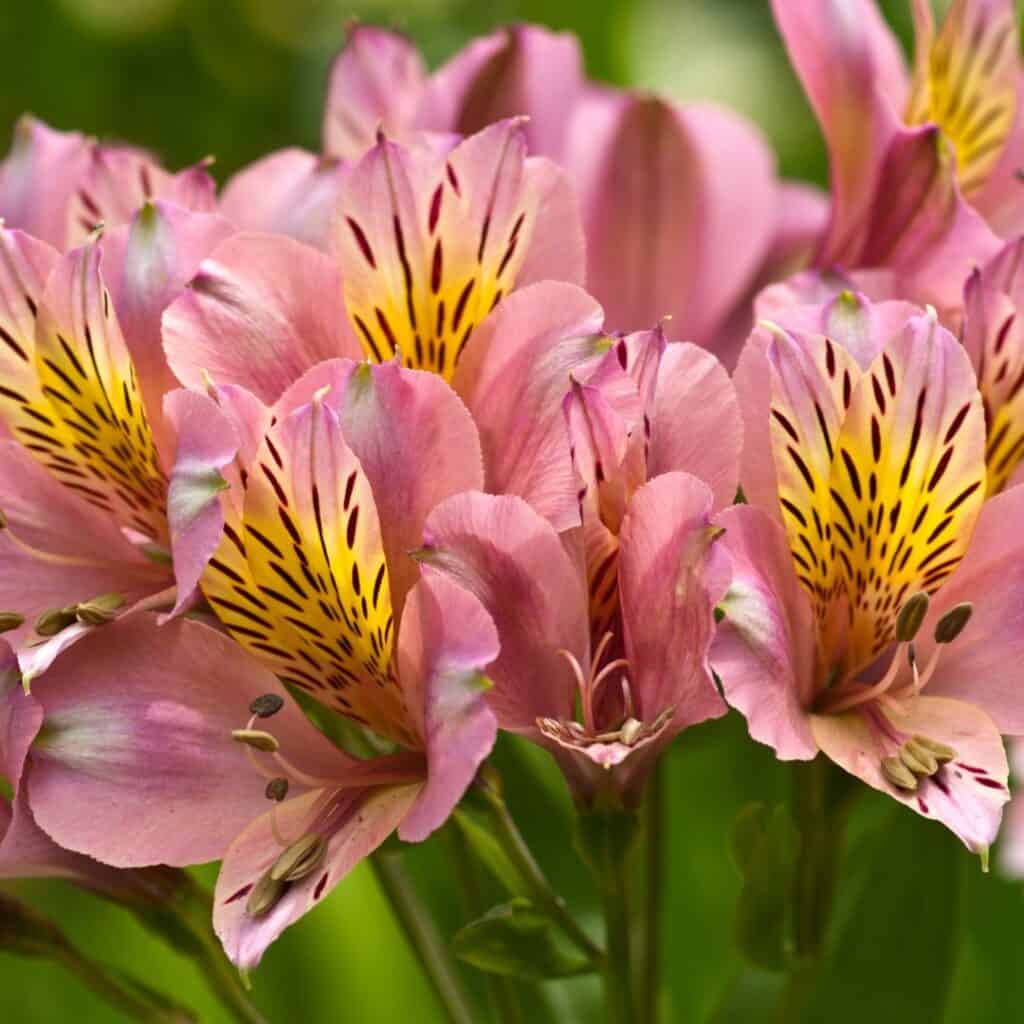

Cutting back Alstroemerias helps them look neater and encourages new growth. Cutting the stems right down to the ground where no new buds are forming is a good idea.
This pruning technique can lead to a fresh burst of flowers later in the season and help keep the plant healthy and vibrant. Gardeners should use clean, sharp tools when cutting Alstroemerias to avoid damaging the plant.
After cutting back, these plants may need some extra water and care. With proper attention, Alstroemerias can continue to provide beautiful blooms well into the fall season.
8) Shasta Daisy
Shasta daisies (Leucanthemum x superbum) are a garden favorite because of their cheerful white petals and yellow centers. Cutting back Shasta daisies in August can encourage a late flush of flowers, extending their blooming period into the fall.
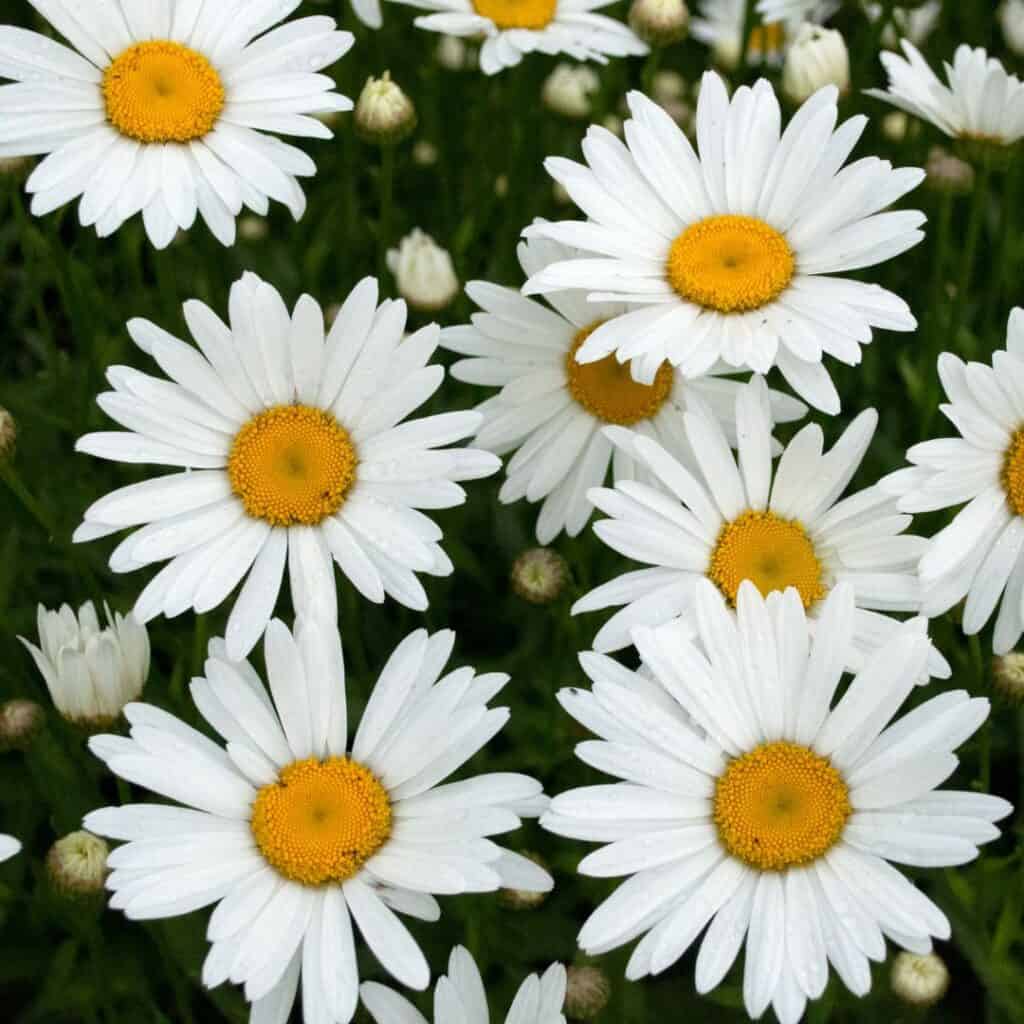

To achieve this, use clean, sharp pruning shears to deadhead the spent blooms. Cut the flower stems down to a set of healthy leaves or buds. This action not only tidies up the plant but also redirects its energy toward producing new buds.
If the plant has become leggy or overgrown, consider cutting back the entire plant by about one-third of its height. This more aggressive pruning can stimulate fresh growth and additional flowering.
After cutting back, ensure the daisies receive adequate water and consider applying a balanced, slow-release fertilizer to support the new growth. By following these steps, your Shasta daisies can continue to brighten your garden with a fresh wave of blooms well into the cooler months.
9) Campanula
Campanula, also known as bellflowers, are charming perennials that bloom in late spring and early summer. They produce lovely bell-shaped flowers in shades of blue, purple, pink, and white.
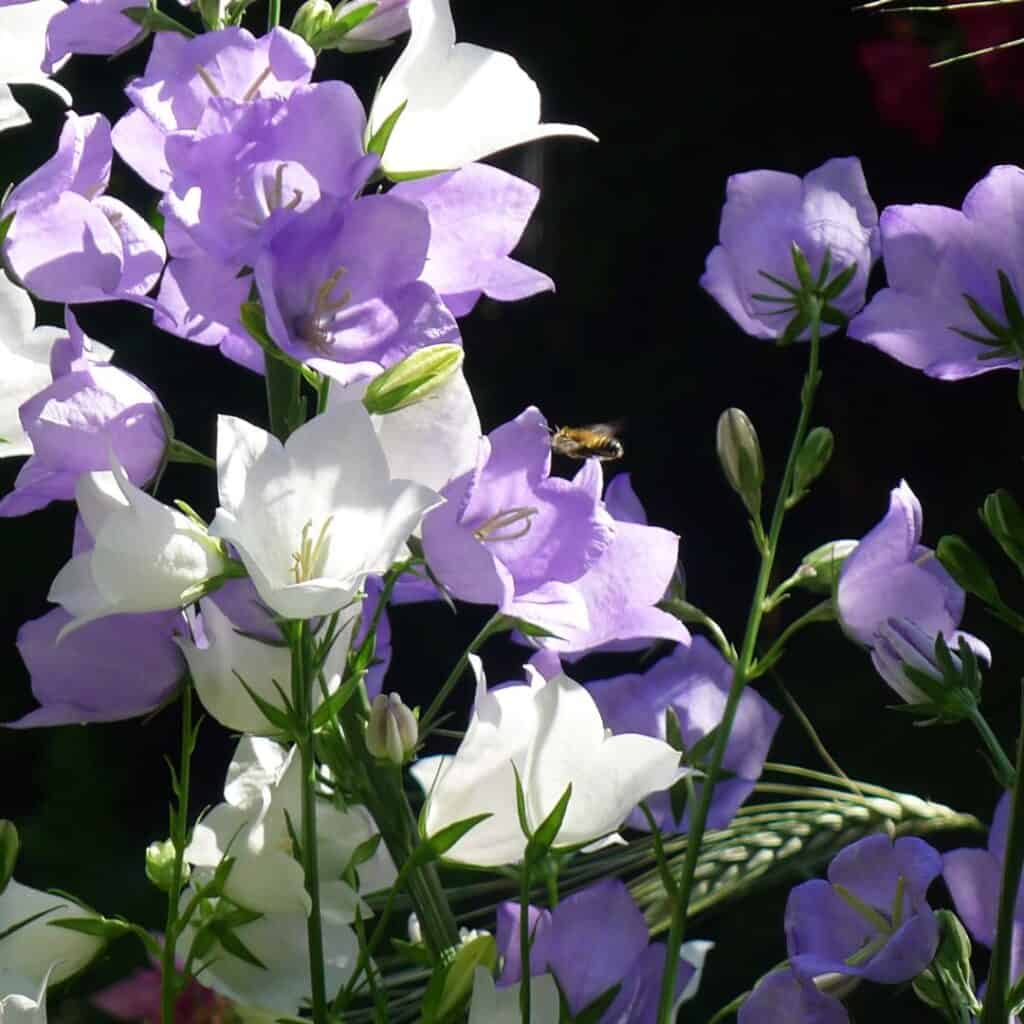

To encourage a late-season bloom, cut back campanula plants in August. Trim the stems to about 6 inches above the ground, removing any spent flowers and foliage.
This pruning technique stimulates new growth, resulting in a fresh flower flush. It also helps maintain the plant’s shape and prevents it from becoming too leggy.
Campanula plants come in various sizes. Some are only 3 inches tall, while others are much taller. Choose the right type for your garden space and follow proper care guidelines for the best results.
10) Yarrow
Yarrow is a hardy perennial that benefits from a mid-summer trim. Cutting it back in August can lead to a fresh burst of blooms.
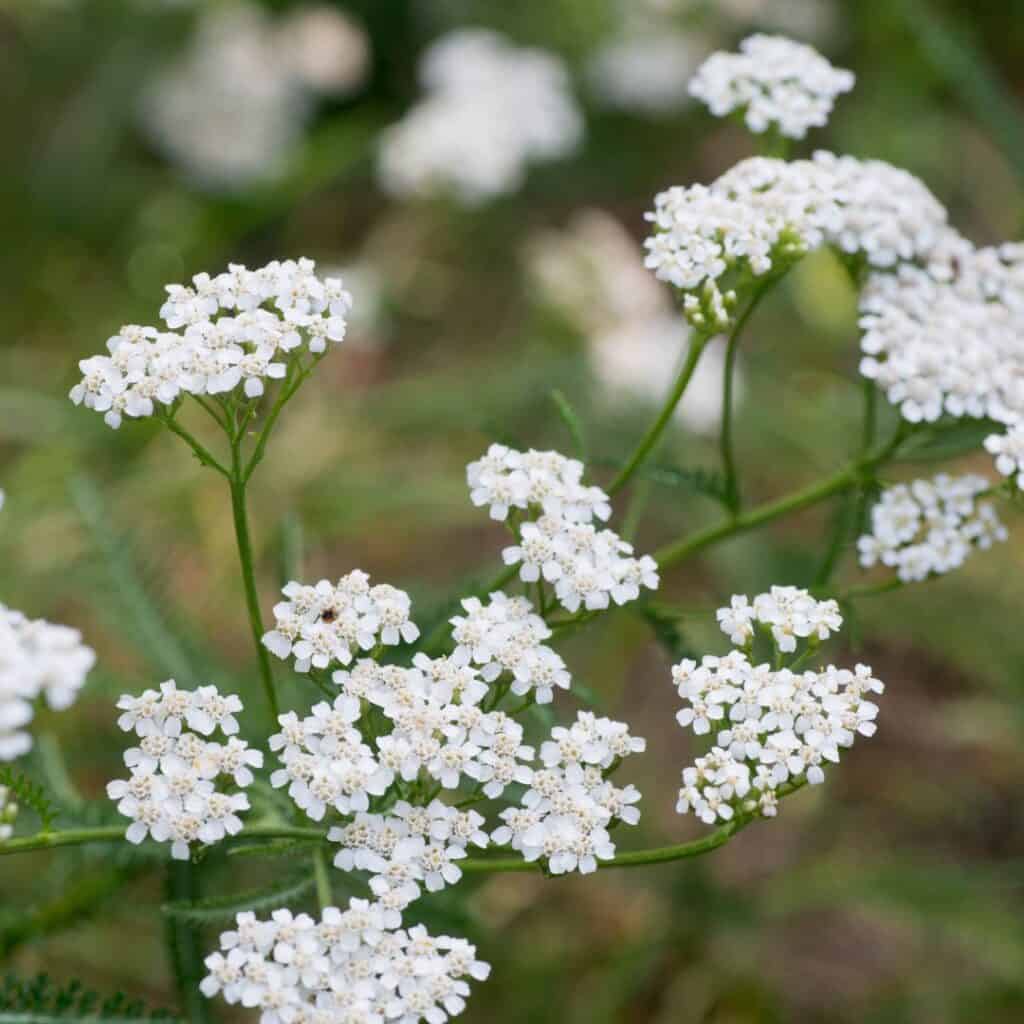

To prune yarrow, use clean shears to cut the stems back to near the ground. This encourages new growth and helps prevent drooping stems.
Yarrow thrives in full sun and well-drained soil. It produces flat-topped flower clusters in white, yellow, pink, and red. After pruning, yarrow often rewards gardeners with fresh flowers that last until frost.
Yarrow is also deer and rabbit-resistant, making it a low-maintenance choice for many gardens. This plant is also known for its resilience and quick recovery.
Regular pruning helps maintain its compact shape and prevents flopping.
Understanding The Benefits Of Cutting Back Perennials
Cutting back perennials in August can lead to a beautiful late-season display. This practice boosts plant health and keeps gardens looking tidy. Proper pruning techniques encourage new growth and vibrant blooms.
Promoting A Late Season Bloom
Cutting back perennials in August can trigger a fresh burst of flowers. Many plants respond to pruning by producing new buds and blooms. This extends the flowering season into fall.
Yarrow is a great example. It often produces a second round of flowers when cut back in August. Gardeners can trim yarrow stems close to the ground where no new buds are forming.
Improving Plant Health
- Pruning perennials helps maintain their overall health.
- Pruning removes dead or diseased parts of the plant, preventing the spread of problems.
- Cutting back perennials also improves air circulation.
- Pruning reduces the risk of fungal diseases.
- Plants like bee balm and phlox especially benefit from this practice.
- Pruning stimulates new growth, which can make plants bushier and more robust.
- For some perennials, cutting back after the first bloom fades encourages a second flush of flowers.
- Regular pruning also helps control plant size.
- Pruning prevents overcrowding in the garden, which can lead to competition for resources.
Enhancing Garden Aesthetics
- Cutting back perennials keeps the garden looking neat and tidy.
- It removes spent blooms and straggly growth that can make the garden look unkempt.
- Pruning can control the height of plants, preventing them from flopping over.
- This is especially useful for tall perennials like catmint.
- When cut back, these plants regrow with a fresh, compact appearance.
- Strategic pruning can also shape plants for better visual appeal.
- It allows gardeners to create desired forms and maintain plant proportions within the garden design.
Pruning encourages new growth and blooms, ensuring the garden remains colorful and vibrant later in the season. This extends the garden’s visual interest well into the fall.
Proper Techniques For Cutting Back Perennials
Cutting back perennials helps promote new growth and extends blooming periods. The right tools, techniques, and timing are key to success. Proper aftercare ensures plants thrive following pruning.
Tools You’ll Need
To cut back perennials effectively, you’ll need a few basic tools:
- Clean, sharp bypass pruners for most stems
- Loppers for thicker stems
- Garden shears for mass trimming
- Pruning saw for woody perennials
- Gloves to protect your hands
- Rubbing alcohol or bleach solution to disinfect tools
Clean tools between plants to prevent disease spread. Sharp blades make clean cuts that heal quickly. Dull tools can crush stems and invite pests or disease.
Best Practices For Common Perennials
Different perennials have unique pruning needs:
- Cut yarrow stems back to near the ground where no new buds are forming
- Trim phlox and bee balm to 2-3 inches above soil level after flowering
- Cut back peonies in fall to prevent fungal diseases
- Prune lilies in fall, leaving 2-3 inches of stem above ground
Make cuts at a slight angle just above a leaf node or bud. This encourages new growth and prevents water from pooling on cut surfaces.
Remove dead, damaged, or diseased parts first. Then shape the plant as desired, removing no more than one-third of healthy growth.
Aftercare Tips
After pruning, plants need extra care to recover:
- Water thoroughly to reduce stress
- Apply a balanced fertilizer to support new growth
- Add a layer of organic mulch around the plant base
- Monitor for signs of pest or disease issues
Don’t fertilize too late in the season. This can promote tender new growth vulnerable to frost damage. Keep the soil consistently moist but not waterlogged.
Remove pruned material from the garden to prevent disease spread. Healthy trimmings can be composted, but dispose of diseased parts in the trash.




